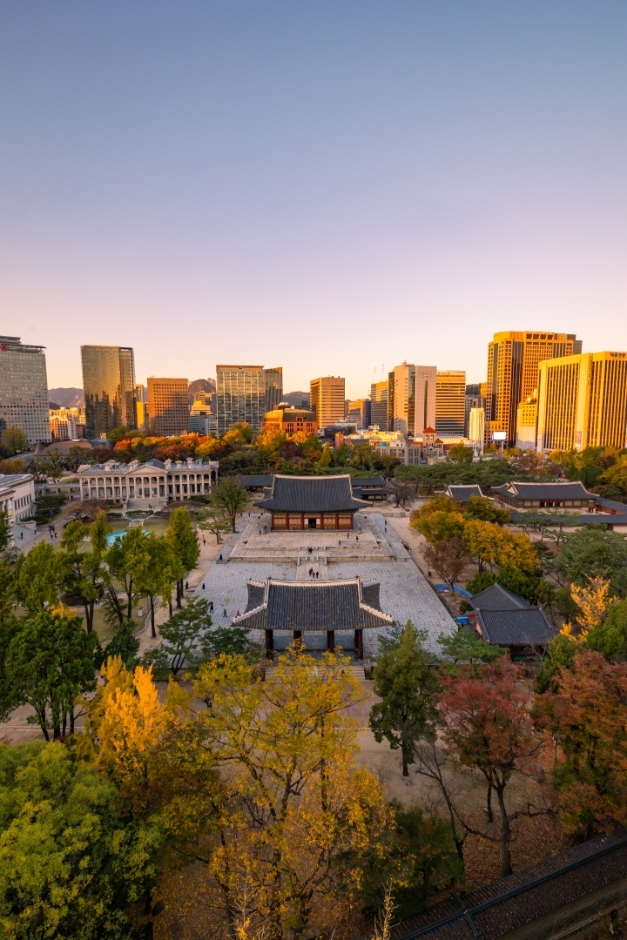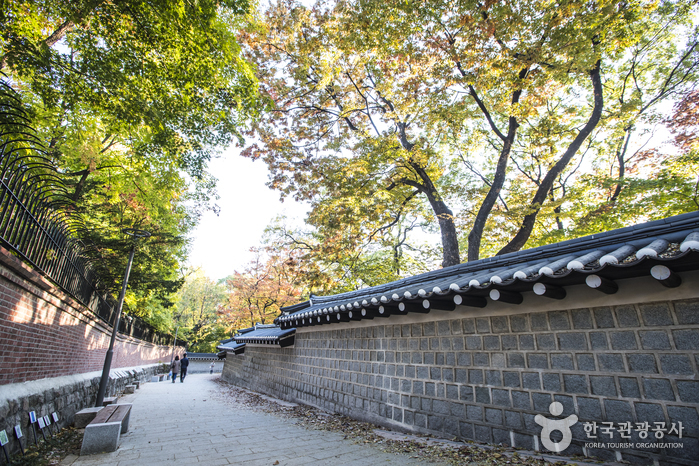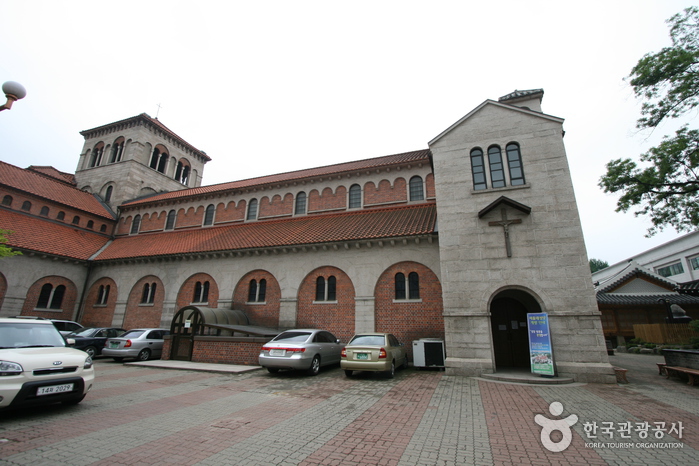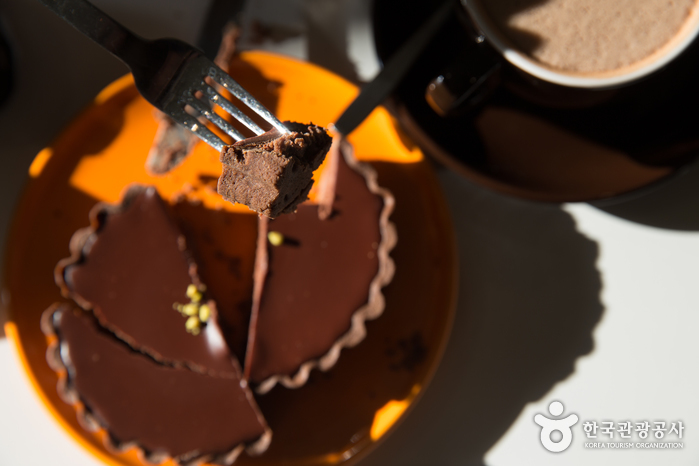Deoksugung Palace (덕수궁)
3.4Km 417762 2024-06-19
99 Sejong-daero, Jung-gu, Seoul
+82-2-771-9951
Registered as a Historic Site, Deoksugung Palace was initially not a royal palace, but the residential home of Grand Prince Wolsan (1454-1488), the older brother of King Seongjong (1469-1494) of the Joseon dynasty. It wasn't until 1593 that the palace was used as a temporary palace of the royal family after their home was burned down during the Imjin War. King Seonjo also stayed at Deoksugung Palace after returning to the city. It became a proper palace when Gwanghaegun (1575-1641) ascended to the throne and gave this royal residence the name Gyeongungung Palace in 1611. Over the following decades, the palace alternated between being an official palace and a temporary residence. The name did not change officially to Deoksugung Palace, meaning the “palace of virtuous longevity,” until 1907. While the palace once encompassed a vast area with many buildings, the current palace grounds are just a small shadow of the prior splendor, with very few structures remaining.
Deoksugung Palace's Daehanmun Gate (덕수궁 대한문)
3.4Km 38032 2024-03-06
99, Sejong-daero, Jung-gu, Seoul
+82-2-771-9951
Located near City Hall station, Daehanmun Gate is the main gate of Deoksugung Palace, one of the princiapl five palaces of Joseon Dynasty. The name "Daehan" means wish for eternal prosperity of the Korean Empire. In front of the gate, the Palace Royal Guard Changing Ceremony is held twice daily, along with the reproduction of costumes and style throughout the year.
Deoksugung Stone Wall Path (덕수궁 돌담길)
3.4Km 73804 2024-03-11
24, Sejong-daero 19-gil, Jung-gu, Seoul
+82-2-120
The Deoksugung Stone Wall Path runs along the wall of Deoksugung Palace. It is beautifully lit and landscaped, giving it a romantic atmosphere even at night. There are street performances and flea markets, and the area boasts many famous cafes and restaurants along Jeongdong street. In autumn, the ginkgo trees and walls form a stunning scene. Close to major cultural facilities such as the Seoul Museum of Art and Seoul Museum of History, it attracts numerous visitors come for a stroll.
Seoul Cathedral Anglican Church or Korea (대한성공회 서울주교좌성당)
3.4Km 31623 2020-03-30
15, Sejong-daero 21-gil, Jung-gu, Seoul
+82-2-730-6611
Seoul Cathedral Anglican Church of Korea began
construction under Mark Trollope, the third bishop of the Anglican Church of Korea, in 1922. It was designed by a English architect Arthor Dixon. Dedication ceremony of the church was held On May 2, 1926 when the construction work hadn't been completed yet. At that time, the church building was a 3-storey building with
a 992 m² floor size. Later in 1993, the original blue print of the church was found at a library in England and the construction resumed
and would be completed in 1996.
The church building is a harmonious combination of Romanesque and traditional Korean style. The exterior of the church is shaped like a cross with various lines placed in harmony. Inside the cathedral, there are 12 stone columns symbolizing the 12 apostles, a
mosaic of Jesus on the front wall, and a brass plate in commemoration of Mark Trollope. Under the brass plate, the
remains of the bishop Mark Trollope are enshrined.
* Size: B1-3F
* Building site area: 519㎡ (157 pyeong), Ground area 909㎡ (275 pyeong)
Muji - Sinchon Branch [Tax Refund Shop] (MUJI 신촌)
3.4Km 0 2024-04-22
1-5F, 12, Yonsei-ro, Seodaemun-gu, Seoul
-
Sinchon World Youth Festival (신촌글로벌대학문화축제)
3.4Km 0 2024-07-25
Changcheon-dong, Seodaemun-gu, Seoul
+82-2-330-6714
The Sinchon World Youth Festival celebrates the identity of global university culture and is a representative festival in the Seodaemun District. The festival features a range of programs and events where visitors can feel the youthful vibe.
17℃ (17도씨)
3.4Km 3304 2019-01-26
38, Donggyo-ro 29-gil, Mapo-gu, Seoul
17℃ stands for the optimum temperature to preserve chocolates at its best quality. Presenting a wide variety of hand-made chocolates, purchasable items include chocolate bars and café menus like chocolate cakes and chocolate beverages. In particular, you can control the amount of cacao in your chocolate drink ranging from 40%~80% according to your preference.
Olive Young - Sinchondaero Branch [Tax Refund Shop] (올리브영 신촌대로)
3.4Km 0 2024-04-18
121, Sinchon-ro, Seodaemun-gu, Seoul
-
Roomin Bukchon[Korea Quality] / 루민북촌[한국관광 품질인증]
3.4Km 0 2024-01-19
13-12 , Bukchon-ro 11-gil, Jongno-gu, Seoul
+82-70-8098-4497
Located in Gahoe-dong, Seoul, Roomin Bukchon is a private hanok accommodation in a residential area near Bukchon Hanok Village. It is 23.14㎡ in size, so it is not very spacious, but it is sufficient to accommodate two people. It is equipped with a Balmuda toaster, an induction cooktop, a bathroom with a shower, and a bedroom with a beam projector to ensure that there are no conveniences. Guests are also provided with aromatherapy amenities and drip coffee bags from a popular cafe nearby, as well as access to a washing machine. You will find major tourist attractions nearby, including the Palace, Insa-dong, and Hanok Village.
Tea Therapy (티테라피)
3.4Km 0 2024-01-30
74 Yunboseon-gil, Jongno-gu, Seoul
Tea Therapy, located in Jongno-gu, Seoul, is a place for those who feel uncomfortable because of a minor illness that is not serious enough to require going to the hospital. Visitors can enjoy medicinal herb tea, which is often difficult to approach, in a more easy and special way here. Tea Therapy’s tea, like other herbal teas, can be brewed within 3 minutes and offers a soothing sensation. Not only is the tea delicious but it also benefits the body. Even those unfamiliar with teas can find a tea that suits their taste and needs through a simple and amusing tea test. The types of tea offered at Tea Therapy include Hyangtong Tea, good for muscle pain; Omija Tea, which gives vitality; Medicinal Herb Tea, good for colds; and Pear and Bellflower Root Tea, good for the bronchial tubes. They also sell those teas so that visitors can enjoy the same taste at home.



![Muji - Sinchon Branch [Tax Refund Shop] (MUJI 신촌)](http://tong.visitkorea.or.kr/cms/resource/85/2878285_image2_1.jpg)

![Olive Young - Sinchondaero Branch [Tax Refund Shop] (올리브영 신촌대로)](http://tong.visitkorea.or.kr/cms/resource/73/2888873_image2_1.jpg)
![Roomin Bukchon[Korea Quality] / 루민북촌[한국관광 품질인증]](http://tong.visitkorea.or.kr/cms/resource/63/2813663_image2_1.jpg)

 English
English
 한국어
한국어 日本語
日本語 中文(简体)
中文(简体) Deutsch
Deutsch Français
Français Español
Español Русский
Русский